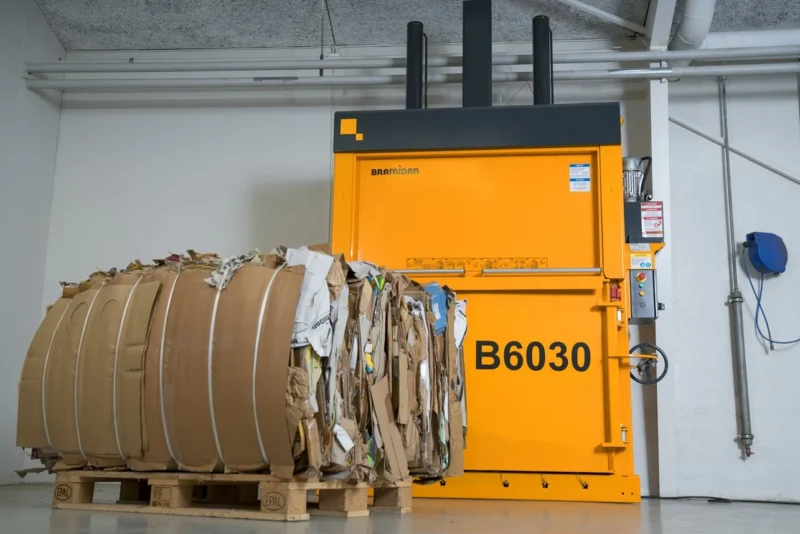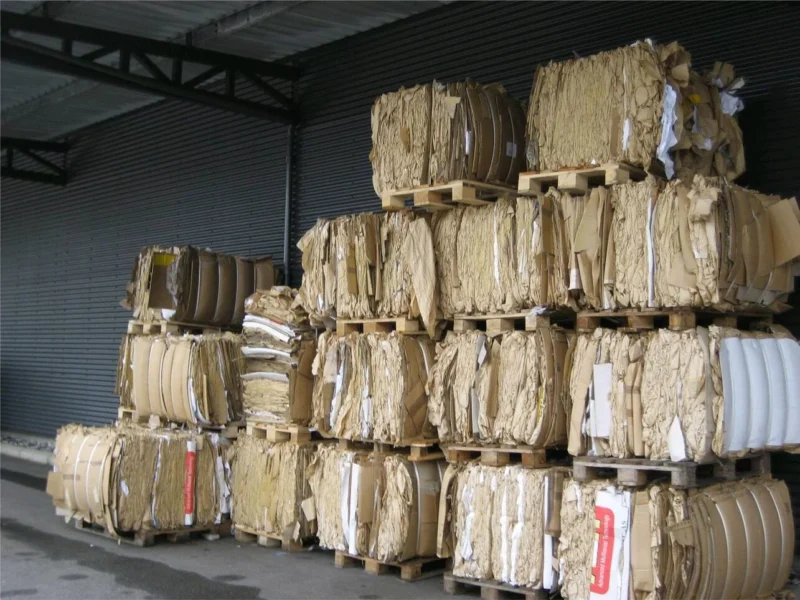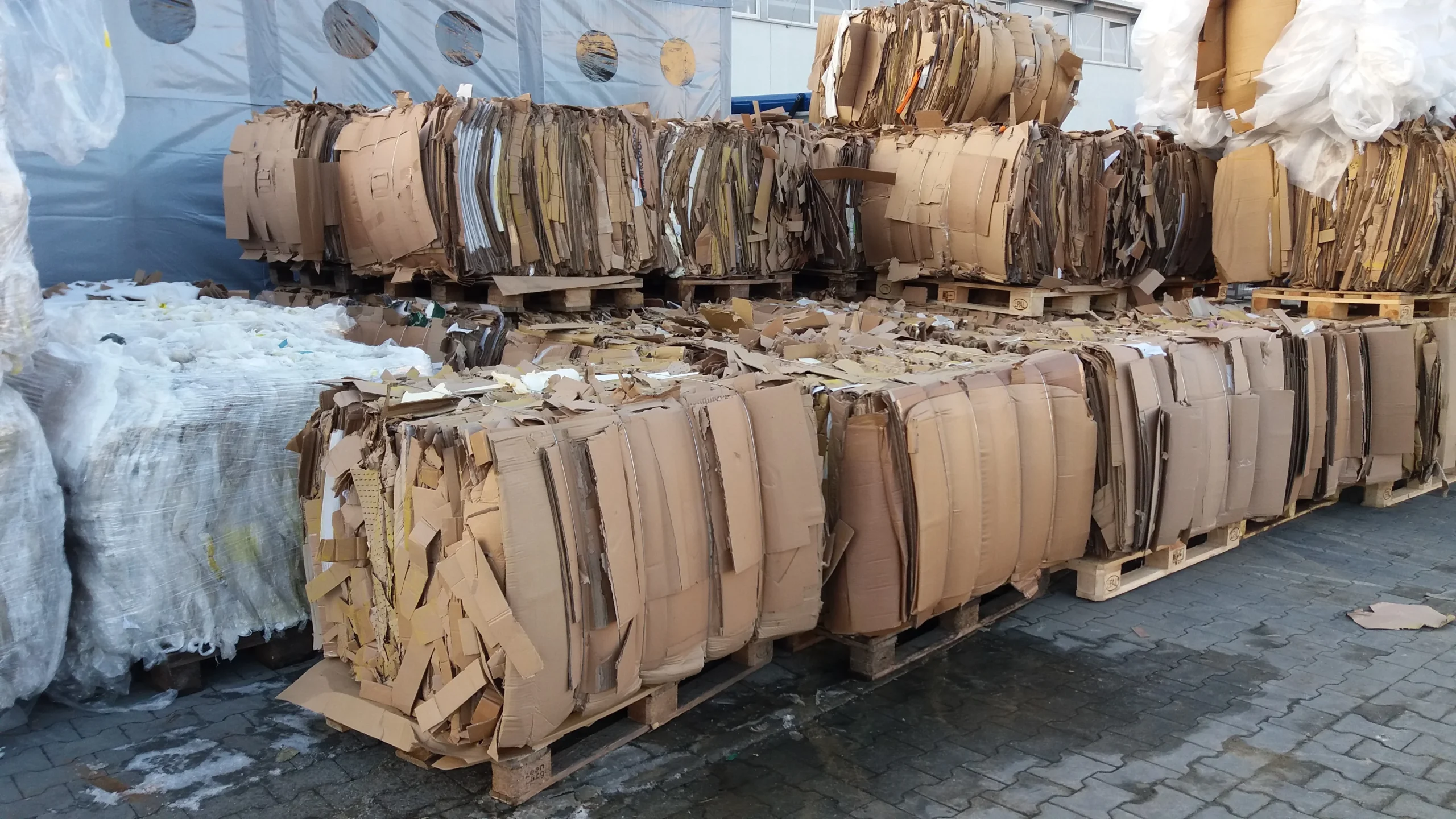What is a Recycling Bale?
Recycling bales are compressed blocks of recyclable materials that serve as the standard commodity form for many recovered products. Unlike hay bales used in agriculture, recycling bales are dense cubes of materials such as old corrugated containerboard (OCC), various plastics, metals, and other recyclables that have been compressed under significant pressure. The bale is then secured using steel wire or flat strapping and is ready to be transported or stored.
The Baling Process
Recycling facilities create these bales using specialized industrial equipment called balers, which come in two primary configurations:
- Vertical balers – Typically used for small to medium sized operations
- Horizontal balers – Common in larger recycling facilities with higher volume requirements and continuous material processing
These machines apply tremendous pressure to loose materials, compacting them into dense, uniform blocks. Once the baler has been filled, the bale is tied and ready to be ejected. These bales can be efficiently handled, stored, and transported.
Anatomy of a Recycling Bale
A properly formed recycling bale has several key characteristics:
- Shape: Cubic form created through compression
- Binding: Secured with 2-12 metal wires that prevent the bale from expanding or falling apart
- Density: Highly compressed to maximize material weight per cubic foot
- Uniformity: Consistent dimensions to facilitate stacking and transport
Bale Dimensions and Weights
Recycling bales come in various sizes depending on the baler used and the facility’s requirements. The dimensions typically range as follows:
- Weight: A Bramidan B4 makes bales as light as 50 lbs, where a B6030 can create bales as heavy as 1000 lbs. Larger machines like horizontal balers can create heavier bales.
- Standard American size: 60 × 30 × 48 inch bales are most commonly used. Different bale dimensions may be used depending on the application and limitations.
The weight of recycling bales varies dramatically based on both dimensions and material type. Bale weights can be as light as 50 lbs, and as heavy as 1900 lbs depending on the model.

B6030 Vertical Baler

Stacked bales ready for transport
Commercial Value Considerations
For recycling bales to maintain commodity value in the marketplace, they must meet certain weight requirements. Typically, bales need to weigh over 850 pounds to have significant commercial value. Lighter bales often require rebaling to meet industry standards, which adds cost and reduces efficiency. The New York Department of Sanitation, for example, works with bales as small as 50 pounds, but these are outside the norm for commercial recycling operations.
Baling material like cardboard (OCC) with a vertical baler significantly increases its market value. Loose cardboard takes up more space, is costly to haul, and may be rejected by buyers. In contrast, dense, uniform bales are easier to transport and are preferred by recyclers, often commanding a higher price per ton. Market rates for OCC fluctuate, but businesses that consistently produce clean, well-baled cardboard can offset waste disposal costs. Mill-sized bales of OCC can range anywhere from $10-$70. Factors like demand, bale quality, and location can affect the value of your bales.
Depending on your region, some recyclers will have a preference on how bales are secured. This is generally dictated by how the bales are harvested. Baling wire is typically removed with a large magnet which is not possible with strapping.
Equipment Manufacturers
Companies like Bramidan produce balers designed to create bales of specific dimensions and weights. Bramidan manufactures 20+ models of vertical and horizontal balers which are built for various different volumes and applications. Their equipment specifications provide a useful reference for understanding the relationship between bale size and resulting weight, particularly for materials like cardboard.
Importance in the Recycling Supply Chain
Standardized baling is crucial to the economics of recycling. By compressing materials into uniform blocks, organizations can:
- Maximize storage capacity
- Reduce transportation costs
- Meet mill and processor specifications
- Facilitate accurate weighing and trading of materials
- Streamline handling throughout the recovery process
The humble recycling bale, therefore, represents not just compressed waste materials, but the fundamental unit of commerce in the global recycling industry.
Questions? Contact Us Today




